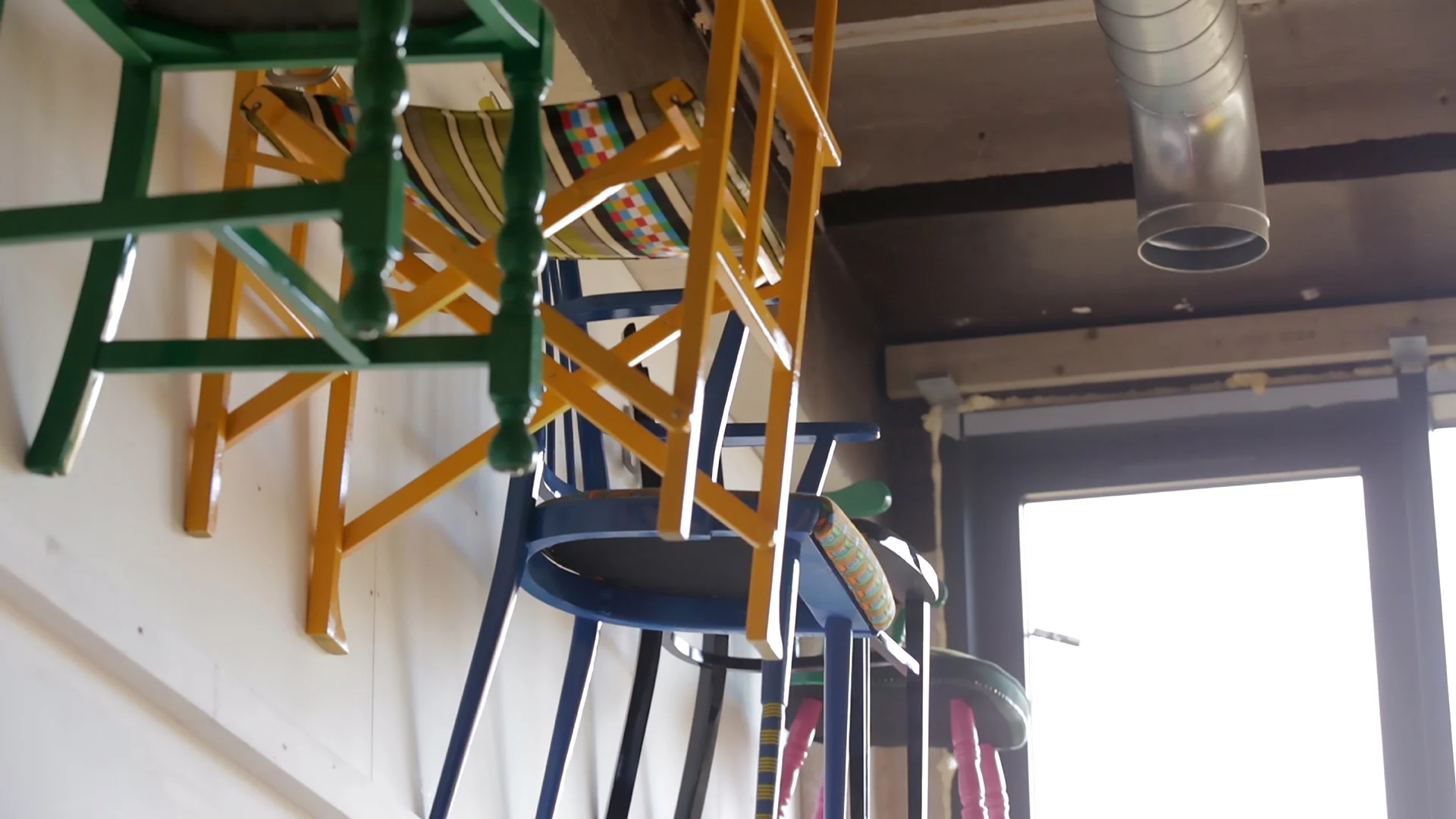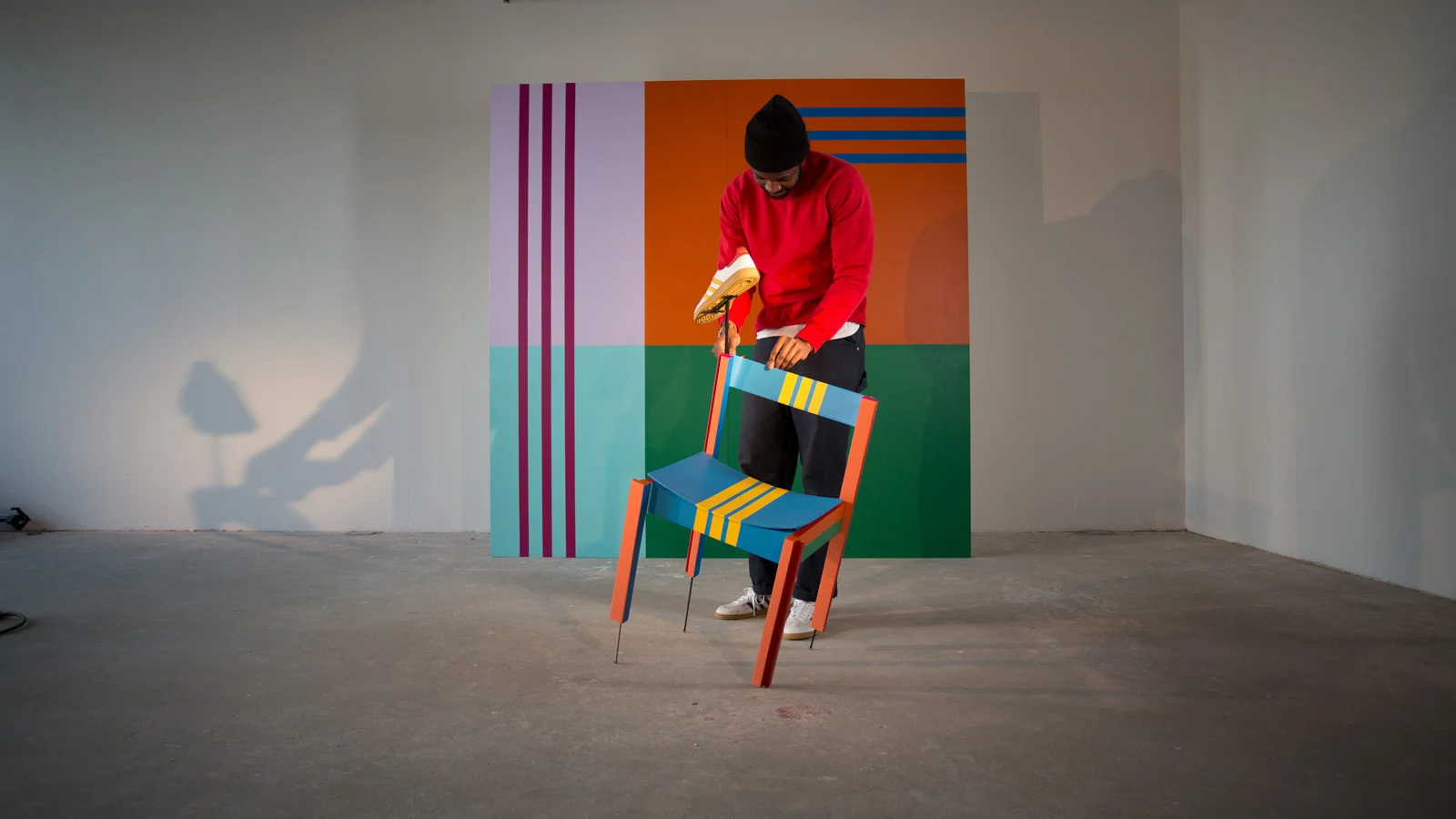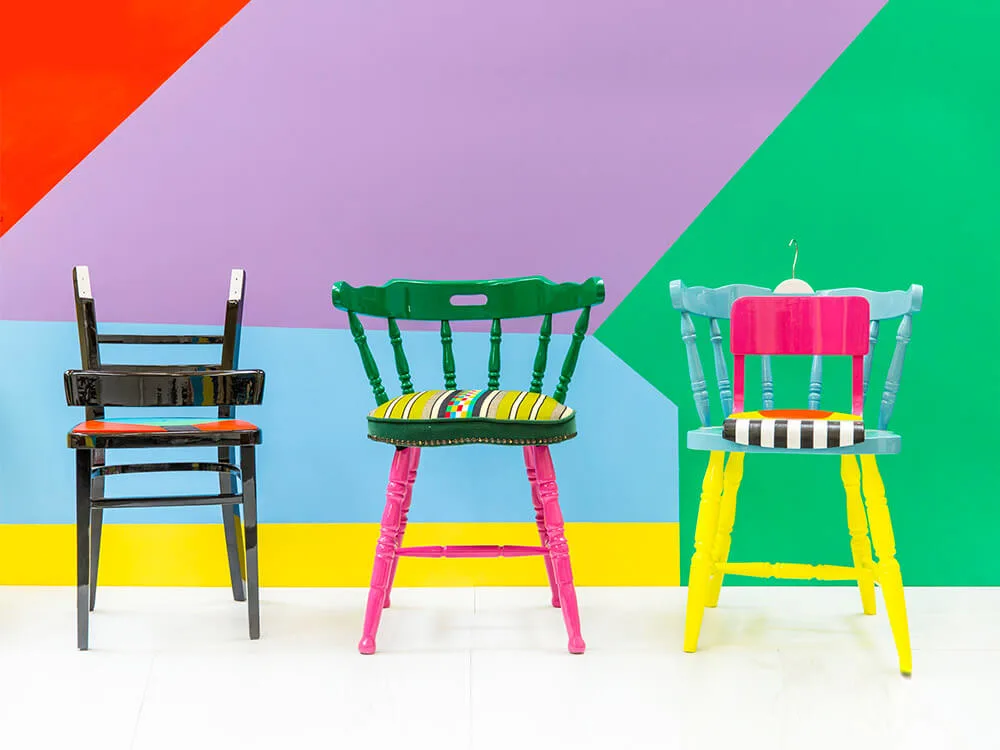

Yinka Ilori is a unique creative soul who marches to his own beat. His work blends past and present, form and function and his British and Nigerian heritage. It speaks to the head and the heart, capturing the essence of what it means to make your own way in the world. In collaboration with miadidas, we dropped by his London studio to meet the man and delve into his mind…
Some artists immediately fall in love with their medium. Others, not so much. When Yinka Ilori’s art school tutors set him a brief based on chairs, he wasn’t exactly hooked.
“At the time, it didn't sound exciting,” he recalls. “Why are we sourcing old furniture, what's that about? But the deeper I got into the project and understood the power of chairs – the narratives you can find in these objects – I absolutely fell in love.”
That first foray into furniture was inspired by Italian designer Martino Gamper’s famous 100 Chairs in 100 Days project. Martino said that “Objects talk to us” and Yinka certainly bought into that.
His first creation was a beautiful green, sculptural chair , and it set the direction of his unique career. Ever since he graduated, Yinka has been up-cycling old furniture that he finds on the streets of London, transforming them into bright, bold new creations bursting with color.
Yinka's first ever chair, the piece that would go onto shape his creative path
By combining bits and pieces from different chairs, Yinka brings together two stories – “These two old chairs came from different people, who lived and led different lives.”
Inspired by these hidden histories, Yinka has been integrating his own life story into his work too. “Obviously I'm a first generation British-Nigerian living in London,” he says (his parents left Nigeria 30 years ago to start new lives in the UK).
“For me it was important to tell new narratives in my way, and not in a way that's been diluted or retold by someone else.”
And so he had to find his own place, moving back and forth between these two worlds. While the chairs are from the UK, the colors he picks are inspired by Nigerian fashion and interior design, and the stories he adds are based on Nigerian parables. By combining all these influences, Yinka owns his story.
His Nigerian background almost stopped him going to art school though. “Some of my family wanted me to be something academic, you know, a lawyer, or a doctor, or a scientist. Something that would make you money!”
Although he went onto study product and furniture design, he’s always melded art and design in his practice.
For me it was important to tell new narratives in my way, and not in a way that’s been diluted or retold by someone else.
He names painters like Salvador Dali, Francis Bacon and Picasso as his early influences, and on closer inspection you spot elements of their style in his work. Each of these artists tended to pick their subjects apart, study them closely and then put them back together in interesting and innovative new ways.
By sourcing old, vintage chairs, breaking them apart and giving them a new life, Yinka follows the same logic as Picasso’s cubist paintings , Dali’s surrealist clocks or Bacon’s portraits.

Yes, it is a niche thing that I do, but I think sometimes it’s quite good to be niche.
But Yinka sometimes struggles to explain his work as it straddles the art and design world. Chairs are usually seen as functional objects but Yinka toys with this expectation – chopping off legs and the like.
And while big-name designers make a fortune churning out high-end chairs, Yinka’s pieces are one-offs, taken from found objects. The trade-off though is that each one has a unique charm.
“I don't really want to replicate – I like that idea of exclusivity, tailored to you. You have some sort of connection,” he says. “Yes, it is a niche thing that I do, but I think sometimes it’s quite good to be niche. I think people want more because my work is not everywhere.”
More and more his creative talents are being applied in different ways. This has opened up lots of new opportunities. During the 2017 London Design Festival, he had no fewer than four projects on show, ranging from a curated space for Magnum Photos to a workshop where recovering addicts reshaped their personal stories.

All the chairs I see are so different, and they have different narratives. For me that’s heaven. I’m in chair heaven
Whatever the project, his starting points remain similar. He begins with key words and then free associates those into colors.
“So if I look at ‘hierarchy,’ I look at colors that reflect or shout out status – I look at gold, or yellow, because those remind me of going to a party in Nigeria and looking at people who live expensive lifestyles,” Yinka says.
And although selecting the color palette is one of Yinka’s favorite parts of the process, he’s happiest roaming the streets on the hunt for interesting old chairs.
“Imagine being a kid going into a sweet store. There is every sweet you can think of but you only have one pound. That's how I am when I select chairs,” he says. “All the chairs I see are so different, and they have different narratives. Some are really old, some are big, some are small. For me that's heaven. I'm in chair heaven.”






